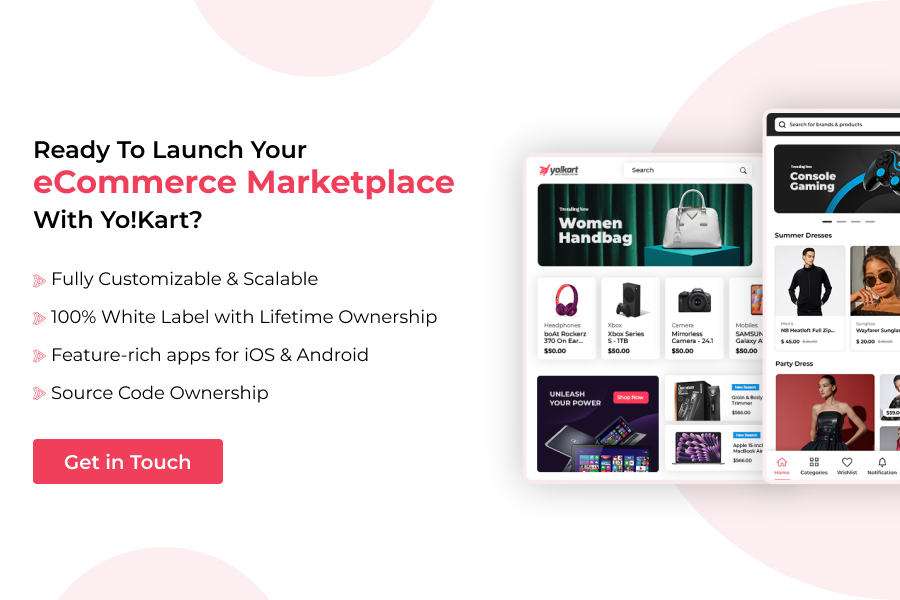Despite the notion that ecommerce is primarily a B2C industry, the numbers tend to tell a different story. Ecommerce industry’s B2B segment has reaped a total GMV worth $7.6 Trillion in 2017. Since B2B buyers make a more informed purchase decision, B2B ecommerce businesses enjoy a conversion rate of about 10%, which is way higher than an average conversion rate of 1-2% in the case of B2C ecommerce.
Given the fact that B2B ecommerce is a lucrative and successful business model, let’s take a look at some of the best practices you can deploy to ensure high returns and a successful growth path. Read along…
1. Customer Segmentation
Categorizing your audience on various parameters such as demographics, purchase motivation, business needs, order volume and type (retail and wholesale) helps in better customer identification. B2B ecommerce businesses can use this segmentation as a leverage to customize their marketing strategy and customer engaging tactics.
Segmentation also helps you in engaging your audience through a more personalized marketing. Knowing the requirements and buying triggers of different segments can help you in designing your storefront in a more efficient way. Customer segmentation is especially useful when you are planning to launch a multivendor ecommerce business.
2. Detailed and Accurate Product Description
Ensuring that you provide a precise and detailed product description will encourage your end users to make the purchase decision quickly. Insufficient product information can lead to misinterpretation and eventually, marketplace abandonment instances can increase.
When it comes to description, you also need to make sure that you provide the complete cost of purchase, comprising of shipping charges too, if applicable. The idea is to make the monetary factors as transparent as possible. This will help in establishing trust among your customers and also aid them in making a more educated purchase decision. In short, your Product Description should give customers what they want, not what you want to sell them.
Pro Tip: Give your customers an option to see the retail as well as wholesale prices of the products and services you have to offer.
3. Offering Flexible Payments
The way B2B businesses work is a lot different from B2C ecommerce models, especially in the case of payments. B2C customers don’t have to go through complex procedures of B2B businesses such as payment approvals and discussion among two or more decision makers. In B2B ecommerce, your end customers are businesses with their own finance department, and every purchase they make is for growing their business.
Furthermore, B2B ecommerce businesses should execute all transactions through a corporate account. All the purchase decision makers are included in this account with a set limit of amount that they can transact. It is also easy for B2B business owners to issue an invoice at the end of the month. This method saves labor as well as time.
Of course, you can include as many payment options as you want, when payments are flexible, methods can be flexible too!
Analytics & Reporting Features Are Must for Your Ecommerce Store
4. Adapting an Amiable Approach
The most common mistake that B2B marketplace owners make is made while developing the content. The mistake they make is that they create content as if they are targeting emotionless businesses.
While creating content for a B2B ecommerce business, people tend to use words such as ROI, growth, revenue; they just can’t stop talking business. This is where we’d like to be a bit direct: hold your horses. Even better, take a step back and analyze gain.
Are you talking to a business? Or are you talking to a person who runs a business? Businesses don’t run business, people run business. Treat people like people and not like an entity. Talk about building trust, talk about values and talk about how choosing you will make them feel proud of their decision.
Communicate with them on a human level. Avoid using jargons as much as possible. One good idea would be to “Echo” the words your customers use. While creating content, take a look at reviews and comments posted by your target audience on various websites. Understand the tone and words they like to use and include them in your sentences. When people see you talk like they do, they trust you quickly, leading to easier, better and quicker conversions.
Another good idea is to use blogs to engage your audience as it helps them in knowing more about you and understand how you can help them grow.
5. Real-Time Inventory Updates
Automated inventory control and stock management is essential to make sure you get instantaneous updates regarding any changes in the inventory. Automation helps you in getting data in real-time, so you can keep a tab on your inventory and see how much product is gone and how much is left.
Also Read: Save Time and Money while Selling More through Ecommerce Automation
Another good practice that various B2B ecommerce owners include in their business is to integrate the inventory with the product catalog for buyers. This lets the buyers see how much of an item is left in the stock. It helps in managing bulk order purchases.
Conclusion
You’d have realized that we didn’t mention anything about design, page loading speed, mobile friendly website or navigation. We didn’t talk about them because these things have already been discussed for N number of times.
The points we discussed above are as imperative as the technical working of a website. See, all these elements work like cogs of a wheel. They need to work in tandem to keep the wheel spinning. Follow the 5 practices in tandem with a responsive, feature rich functional website that looks pleasing to the eyes; and you’ve got yourself the perfect formula for success.
Now that you have a better idea of how to reap maximum benefits from your B2B Business, do read Kavya’s take on the B2C Market.





